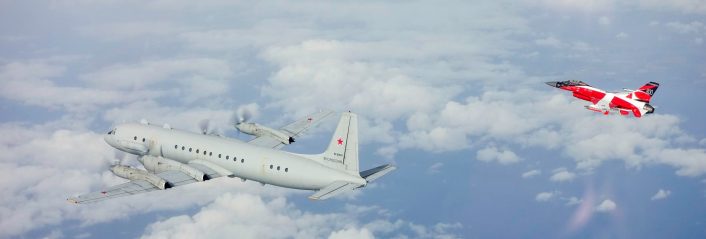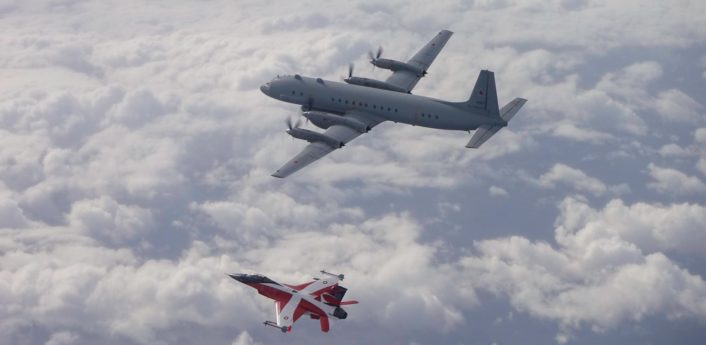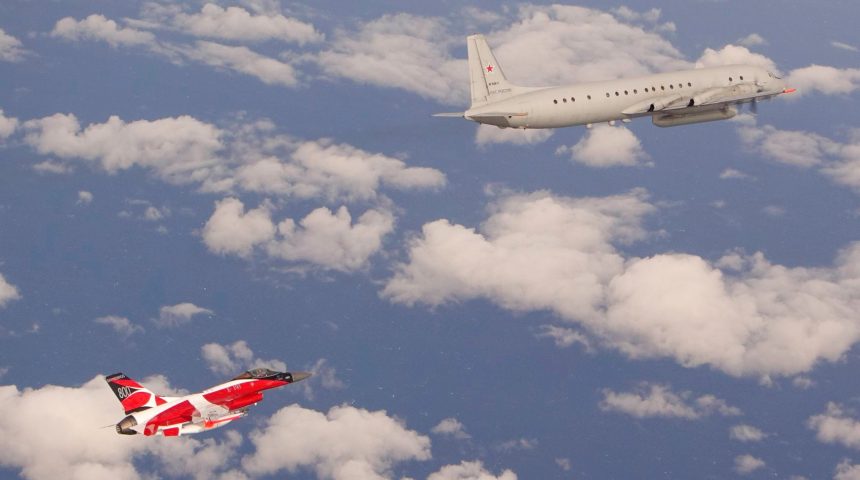It was a routine interception but you don’t see special colored fighters in QRA (Quick Reaction Alert) service too often.
On Sept. 30, 2019, two Royal Danish Air Force F-16s were scrambled from Skrydstrup to intercept and identify a Russian Air Force Il-20M Coot-A aircraft flying in international airspace off Denmark.
It was a pretty routine mission, if it wasn’t for the fact that one of the two F-16s in QRA service, was a special colored “Viper” (as the Fighting Falcon is dubbed within the fighter pilots community). Indeed, involved in the A-Scramble (Alpha Scramble – alert scramble) was the F-16AM E-191 of the Esk 730 in special Dannebrog (which translates to “the cloth of the Danes” or the “red flag”) livery to commemorate the 800th anniversary of the Danish flag on June 15, 2019.
For this reason, the intercept mission became a pretty unique opportunity to take some cool air-to-air photographs like the ones taken by the RDAF yesterday.

Dealing with the aircraft, here’s how we described the Il-20 when it first appeared in the Syrian theater of operations in 2015:
The Il-20 is an ELINT (Electronic Intelligence) platform: it is equipped with a wide array of antennas, IR (Infrared) and Optical sensors, a SLAR (Side-Looking Airborne Radar) and satellite communication equipment for real-time data sharing, the aircraft is Russian Air Force’s premiere spyplane.
Russian Il-20s regularly perform long-range reconnaissance missions in the Baltic region, flying in international airspace with its transponder turned off; a standard practice for almost all ISR (Intelligence Surveillance Reconnaissance) aircraft. However, at least twice in the last couple of years Russian Coot spyplanes flying close to civilian airports or congested airways were involved in “air proximity” incidents: in March 2014, a SAS Boeing 737 with 132 people almost collided with an Il-20 Coot, about 50 miles to the southwest of Malmö, Sweden; in December 2014, a Canadair CRJ-200 from Cimber Airlines was involved in a near collision with an Il-20 halfway between Ystad, Sweden and Sassnitz, Germany.
In Syria, the aircraft will probably perform intelligence gathering missions, eavesdropping into IS militants communications, detecting their systems’ emissions to build an Electronic Order of Battle of ISIS in the region, and pinpointing their positions. And, as happened in northern Europe, unless their missions are coordinated, there is the risk of a close encounter with a US-led coalition aircraft involved in Operation Inherent Resolve.










